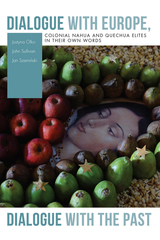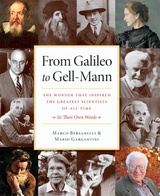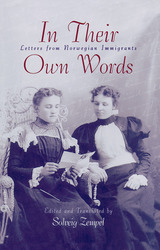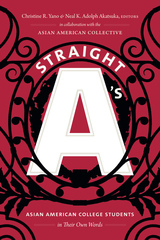4 books about Their Own Words

Dialogue with Europe, Dialogue with the Past
Colonial Nahua and Quechua Elites in Their Own Words
Justyna Olko
University Press of Colorado, 2018
Dialogue with Europe, Dialogue with the Past is a critical, annotated anthology of indigenous-authored texts, including the Nahua, Quechua, and Spanish originals, through which native peoples and Spaniards were able to convey their own perspectives on Spanish colonial order. It is the first volume to bring together native testimonies from two different areas of Spanish expansion in the Americas to examine comparatively these geographically and culturally distant realities of indigenous elites in the colonial period.
In each chapter a particular document is transcribed exactly as it appears in the original manuscript or colonial printed document, with the editor placing it in historical context and considering the degree of European influence. These texts show the nobility through documents they themselves produced or caused to be produced—such as wills, land deeds, and petitions—and prioritize indigenous ways of expression, perspectives, and concepts. Together, the chapters demonstrate that native elites were independent actors as well as agents of social change and indigenous sustainability in colonial society. Additionally, the volume diversifies the commonly homogenous term “cacique” and recognizes the differences in elites throughout Mesoamerica and the Andes.
Showcasing important and varied colonial genres of indigenous writing, Dialogue with Europe, Dialogue with the Past reveals some of the realities, needs, strategies, behaviors, and attitudes associated with the lives of the elites. Each document and its accompanying commentary provide additional insight into how the nobility negotiated everyday life. The book will be of great interest to students and researchers of Mesoamerican and Andean history, as well as those interested in indigenous colonial societies in the Spanish Empire.
Contributors: Agnieszka Brylak, Maria Castañeda de la Paz, Katarzyna Granicka, Gregory Haimovich, Anastasia Kalyuta, Julia Madajczak, Patrycja Prządka-Giersz
In each chapter a particular document is transcribed exactly as it appears in the original manuscript or colonial printed document, with the editor placing it in historical context and considering the degree of European influence. These texts show the nobility through documents they themselves produced or caused to be produced—such as wills, land deeds, and petitions—and prioritize indigenous ways of expression, perspectives, and concepts. Together, the chapters demonstrate that native elites were independent actors as well as agents of social change and indigenous sustainability in colonial society. Additionally, the volume diversifies the commonly homogenous term “cacique” and recognizes the differences in elites throughout Mesoamerica and the Andes.
Showcasing important and varied colonial genres of indigenous writing, Dialogue with Europe, Dialogue with the Past reveals some of the realities, needs, strategies, behaviors, and attitudes associated with the lives of the elites. Each document and its accompanying commentary provide additional insight into how the nobility negotiated everyday life. The book will be of great interest to students and researchers of Mesoamerican and Andean history, as well as those interested in indigenous colonial societies in the Spanish Empire.
Contributors: Agnieszka Brylak, Maria Castañeda de la Paz, Katarzyna Granicka, Gregory Haimovich, Anastasia Kalyuta, Julia Madajczak, Patrycja Prządka-Giersz
[more]

From Galileo to Gell-Mann
The Wonder that Inspired the Greatest Scientists of All Time: In Their Own Words
Marco Bersanelli
Templeton Press, 2009
From time to time, the diligent science student huddled over dense volumes of research findings and highly technical data will stumble upon a truly rare treasure: the author’s answer to the question of, “Why?” Why did the authors of these volumes commit themselves so ardently to life in the laboratory? What was it that motivated them to keep their eye to microscope for years on end? Why did the world’s greatest scientists devote their lives to research—an endeavor where failure is the exponentially more likely outcome than success?
In their new anthology, From Galileo to Gell-Mann, Marco Bersanelli and Mario Gargantini have gathered the answers to these fascinating questions from over one hundred of the brightest scientific minds from our past and our present. It is a goldmine of insight that previously could only to be found hidden deep within thousands of scattershot pages of footnotes from out-of-print journals, rare books, and unpublished papers. Throughout the work, Bersanelli and Gargantini also offer insightful commentary and discussion on the readings.
Among the most remarkable similarities that emerge when one considers together these writings from the likes of Albert Einstein, Gregor Mendel, Marie Curie, and others, is the sense of wonder and outright awe at what the study of the natural world can reveal. From Galileo to Gell-Mann makes it clear that science and all parallel attempts to understand our human existence—including fields like philosophy to theology—are viewed as nothing less than grand adventures to those that are probing the limits of what we know.
[more]

In Their Own Words
Letters from Norwegian Immigrants
Solveig. Zempel
University of Minnesota Press, 1991
For most Norwegians in the nineteenth century, America was a remote and exotic place until the first immigrants began to write home. Their letters were among the most valuable, accessible, and reliable sources of information about the new world and the journey to it. For many immigrants, writing letters home was their most cherished opportunity to communicate their thoughts and feelings in their native language.
Through vivid translations of letters written to family and friends between 1870 and 1945, In Their Own Words traces the stories of nine Norwegian immigrants: farmer, fisherman, gold miner, politician, unmarried mother, housewife, businessman, railroad worker, contractor. Their common bond was the experience of immigration and acculturation, but their individual experiences were manifested in a wide variety of forms.
Solveig Zempel has thoughtfully selected and translated letters rich in personal description and observation to present each writer's subjective view of historical events. Often focusing on the minutiae of daily life and the feelings of the individual immigrant, the letters form a complex, intimate, and colorful mosaic of the immigrant world.
"Zempel has done us a service by choosing letters that are, first of all, of interest in themselves and, second, that must make us think again about the broad brush with which we habitually paint immigrant life." Scandinavian Studies
"Zempel's letters cover a wide range of experiences from 1870 to 1945. In letters to family friends, nine immigrants ranging from a teacher to a railroad worker, an unmarried mother to a politician, recounted their experiences of immigration and community-building during a period of mass migration to this country. The letter writers corresponded from various regions, from both cities and farms about their successes in America; about such mundane matters as the weather, neighbors, and food; about their desire for Ibsen's new book or a visit home for Christmas. Such letters provide invaluable documentation of everyday life." The Annals of Iowa
"Zempel has performed a valuable service for students of American immigration history. This is an eminently readable, entertaining and excellent book. Zempel uses the letters of nine Norwegian immigrants found in archives from St. Paul, Minnesota to Stavanger, Bergen, and Kristiansand, Norway, to superbly depict not only their singular experiences of living, working, marrying, and raising a family but to also convey their sadness, loneliness, joy and hope." Journal of the West
"The variety and scope of the letters from America to Norway make for fascinating reading; they also provide informative insights into the minds and thoughts of new settlers on American soil. The reader will come away from this volume with a deepened awareness of the importance of 'America letters' in understanding the American experience. Readers will feel close to these writers, engaged as they are in private communications with family members and friends they left behind in the homeland." MELUS
"The variety of occupations, backgrounds, and experiences described in the letters make the book a valuable contribution to the understanding of the Norwegian immigrant experience. The thread that weaves all of the letters together is the reaction of each immigrant to his or her new environment." Journal of American Ethnic History
"These carefully selected letters are bountiful, alive, and touch upon historical events as well as the humdrum experiences of daily life. The insight gained from the accounts reveals valuable information about the new world." School Library Journal
Solveig Zempel is chair of the Norwegian Department at St. Olaf College in Northfield, Minnesota
[more]

Straight A's
Asian American College Students in Their Own Words
Christine R. Yano and Neal K. Adolph Akatsuka, editors
Duke University Press, 2018
The American Dream of success for many Asian Americans includes the highest levels of education. But what does it mean to live that success? In Straight A’s Asian American students at Harvard reflect on their common experiences with discrimination, immigrant communities, their relationships to their Asian heritage, and their place in the university. They also explore the difficulties of living up to family expectations and the real-world effects of the "model minority" stereotype. While many of the issues they face are familiar to a wide swath of college students, their examinations of race, ethnicity, gender and sexuality, and culture directly speak to the Asian American experience in U.S. higher education. Unique and revealing, intimate and unreserved, Straight A’s furthers the conversation about immigrant histories, racial and ethnic stereotypes, and multiculturalism in contemporary American society.
[more]
READERS
Browse our collection.
PUBLISHERS
See BiblioVault's publisher services.
STUDENT SERVICES
Files for college accessibility offices.
UChicago Accessibility Resources
home | accessibility | search | about | contact us
BiblioVault ® 2001 - 2024
The University of Chicago Press









